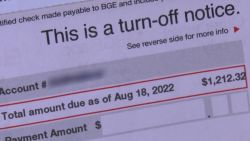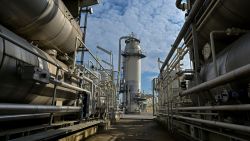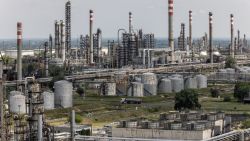The boom-to-bust oil market is experiencing one of its darkest moments in history.
Oil demand is collapsing because of the coronavirus crisis. Supply is shrinking – but not nearly fast enough.
The world is literally running out of room to store unneeded barrels of oil piling up during the coronavirus pandemic. That storage problem is so dire that it caused oil prices to turn negative this week for the first time ever.
The crash is forcing a reckoning in the oil industry – a painful one. Many shale oil producers have canceled drilling plans. Others have been forced to shut down active wells. Some frackers won’t survive at all.
But the violent rebalancing in the oil market might be so overdone that it will set the stage for a spike in prices. When and if demand recovers, there might not be enough supply to meet it.
“We are in an epic bust. As hard as it may be to believe, the next step is a boom,” said Pavel Molchanov, energy analyst at Raymond James.
Some 3.6 billion people are living under lockdowns around the world, Molchanov estimates. Passenger flights have been grounded. Many factories are dark. World oil demand is expected to plunge by a record 9.3 million barrels per day in 2020, according to the International Energy Agency.
But that won’t last forever. At some point, the world will thirst for oil again.
“When demand returns to something close to normal levels, it’s quite possible there will be a shortage situation in 2021,” Molchanov said.
Subzero oil prices
OPEC, Russia and a group of other oil-producing countries have already agreed to slash production by a record-setting 10 million barrels beginning in May. Market forces are causing non-OPEC producers, led by the United States, to similarly cut output.
The shocking collapse in US oil to $-40 added an exclamation point to the problem facing the industry. Oil futures require that holders of a contract take delivery of barrels when the contract expires. But no one wanted to get crude delivered to them in May when storage capacity may run out. Even if it doesn’t run out, storage costs have skyrocketed.
“Holders of May contracts were effectively willing to pay someone to get them out of their long positions…to avoid being physically delivered crude oil next month,” Goldman Sachs analyst Damien Courvalin wrote in a note to clients Monday.
Mizuho analyst Paul Sankey said Tuesday US oil futures could “quite possibly” crash to $-100 in May.
“The physical reality of oil is that it is difficult to handle, volatile, potentially polluting and actually useless without a refinery,” Sankey wrote in a report to clients. “If you had a stinking barrel of oil in your back yard, would you pay someone $100/barrel to take it away? Yes, and you would probably be relieved you were not charged $300.”
Record collapse for US shale
Against that backdrop, oil supply clearly must come down at a breathtaking pace.
US fracking is on track to suffer its biggest monthly decline in history, according to Rystad Energy. The total number of started fracking operations will plunge by 60% in April from the peak earlier this year.
“With ultimately a finite amount of storage left to fill, production will soon need to fall sizably to bring the market into balance,” Goldman’s Courvalin wrote, “finally setting the stage for higher prices once demand gradually recovers.”
How high? Molchanov said oil could trade hit $50 to $60 next year and “potentially higher than that.” Goldman Sachs has previously predicted oil could climb “far above” $55 in 2021.
“This inflection will play out in a matter of weeks, not months, with the market likely forced into balance before June,” Courvalin wrote.
Companies are cutting production in two ways. First, they are slashing their spending plans for drilling new and uncompleted wells. For instance, ExxonMobil (XOM) cut its 2020 spending by 30%, including a large focus on the Permian Basin shale oilfield in West Texas.
Secondly, and most importantly, oil companies are turning the taps off on active wells through a painful process known as “shut-ins.” And there is no guarantee those taps can or will get turned back on at full capacity.
“It will take time and money to turn it back on. It’s not like a light switch,” David Trainer, CEO of New Constructs, an investment research firm based in Nashville.
Bankruptcies are on the way
Some have argued that shale oil wells will be damaged during forced shut-ins, making it trickier to turn them back on. That could limit the ability of US shale companies to respond to higher demand.
“That is a wildcard,” said Jeff Wyll, senior energy analyst at Neuberger Berman. “Fracking is a new phenomenon in the oil market. There’s just less data available.”
And some companies may not be around to turn the taps back on.
In a $20 oil environment, 533 US oil exploration and production companies will file for bankruptcy by the end of 2021, according to Rystad Energy. Even in a $30 environment, more than 200 US producers will go bankrupt, Rystad said.
Rather than get restructured in Chapter 11 proceedings, some of these companies may be unable to get financing to stay alive. They will be forced to liquidate altogether.
“When demand comes back online, there won’t be as many people there to make the oil,” said Trainer.
Some companies that do survive and have undamaged wells may be hesitant to aggressively ramp production back up.
“It’s not like the oil companies will be rushing to turn supply back on so they can just end up in the same situation. They will wait to be sure,” Trainer said.
What if demand doesn’t return?
But this bullish thesis hinges on a sharp recovery in demand back near the 100 million barrels per day the world was consuming before the crisis. And that is no sure thing.
There is a real risk of a more drawn-out recession that limits oil demand in the United States and around the world for a prolonged period. In that scenario, prices could stay low.
One of the big concerns is that a second wave of coronavirus infections strikes during the second half of 2020, hindering any recovery. The director of the Centers for Disease Control and Protection warned Tuesday in an interview with the Washington Post that a second wave will be more disastrous because it would likely coincide with the start of flu season.
That could force a return to the social-distancing and stay-at-home orders that crippled the oil market in the first place.
“One of the biggest risks for the oil market is a false restart of the economy,” said Neuberger’s Wyll.
No one knows for sure how the demand picture will look. Much of that will be determined by the trajectory of the pandemic and the willingness of people to return to pre-crisis activities like road trips, cruises and flights.
Trainer, the New Constructs CEO, is betting they will.
“We’re social creatures. We’re going to want to get back to normal,” he said. “There’s a significant amount of the population that will party like it’s 1999. They’re sitting at home bored out of their minds.”



























